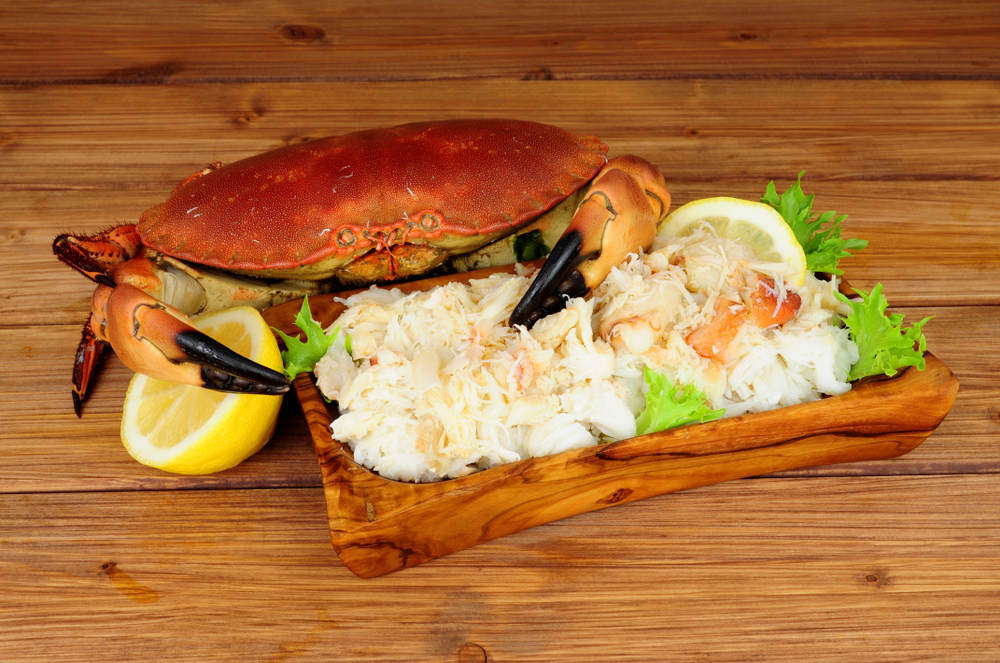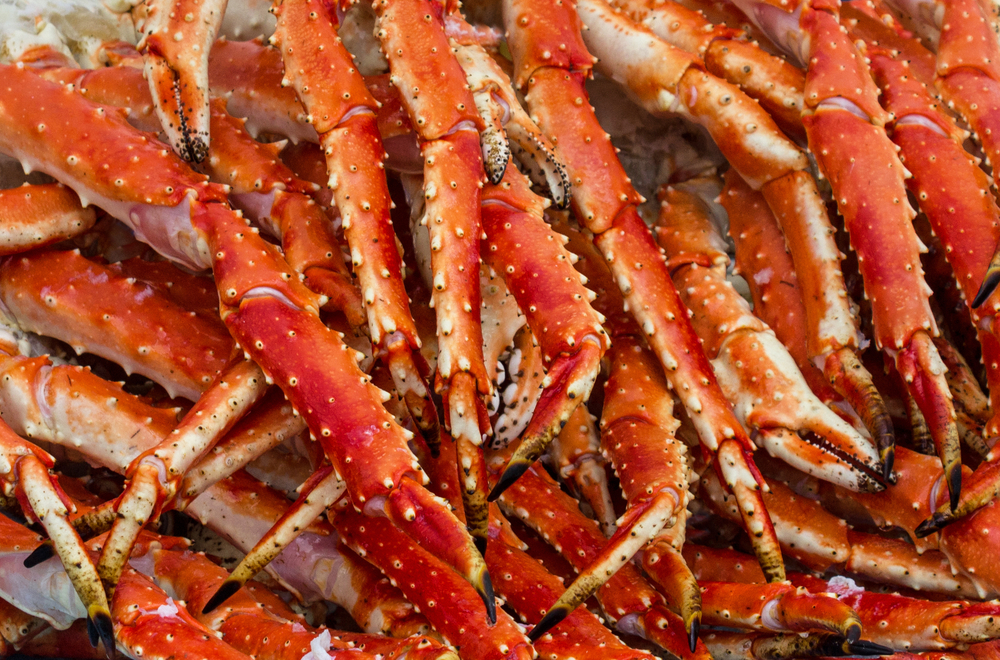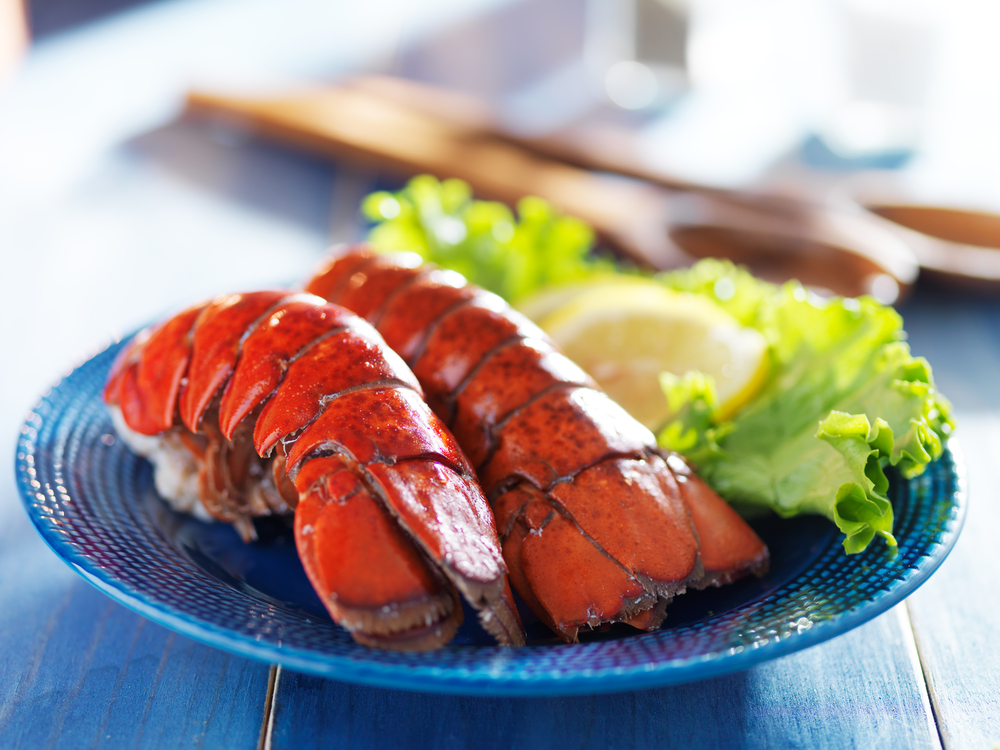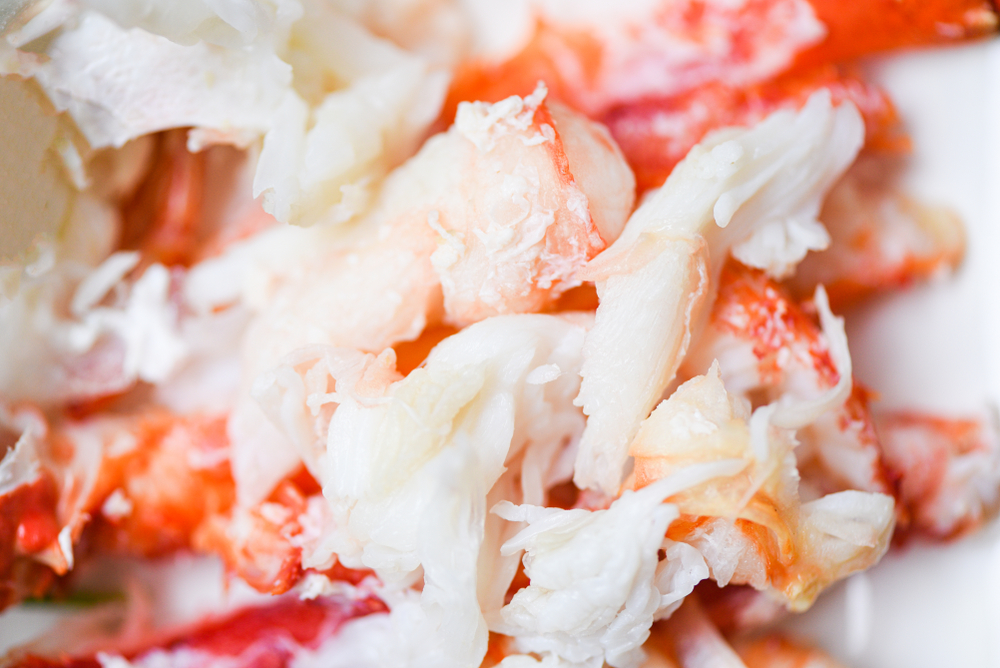As a seafood enthusiast, I’ve always been fascinated by the unique flavors and textures of different aquatic creatures. Two of the most popular and beloved seafood options are lobster and crab. While they may look similar at first glance, there are several key differences between the two.

In this article, I will provide an overview of the differences between lobster and crab, including their physical characteristics, habitats, and culinary uses.
Whether you’re a seafood lover looking to expand your palate or simply curious about the distinctions between these two delicious options, this guide will provide you with all the information you need to know.
Key Takeaways
- Lobster and crab may look similar, but they have distinct physical characteristics and habitats.
- Both lobster and crab are used in a variety of culinary dishes, but they have different flavor profiles and textures.
- Understanding the differences between lobster and crab can help you make informed choices when selecting seafood for your meals.
Overview of Lobster and Crab
As a seafood lover, I find it essential to know the difference between lobster and crab. Both are popular crustaceans that belong to the decapod family, and they are highly sought after for their sweet, succulent meat.
Lobsters are generally larger than crabs, and they have a long, cylindrical body with eight walking legs, two large claws, and a long tail.
Their exoskeletons are usually a reddish-brown color, and they are covered in small spines and bumps. Lobsters are typically found in the Atlantic Ocean, and they are commonly caught off the coast of Maine.
Crabs, on the other hand, have a more circular exoskeleton, and they are typically wider in stature. They have eight legs, with one pair of claws that are used for catching prey and self-defense. Crabs come in a variety of shapes and colors, and they are found in both saltwater and freshwater environments all over the world.
Both lobster and crab are similar in that they are decapod crustaceans with hard exoskeletons and delicious meat. However, there are some key differences between the two species that are worth noting.
For example, lobsters tend to have a sweeter, more delicate flavor than crabs, while crabs have a slightly brinier taste. Additionally, lobsters are typically more expensive than crabs, due to their larger size and popularity in high-end restaurants.
Overall, whether you prefer lobster or crab comes down to personal taste and preference. Both are delicious seafood options that are sure to satisfy any seafood lover’s cravings.
Physical Characteristics
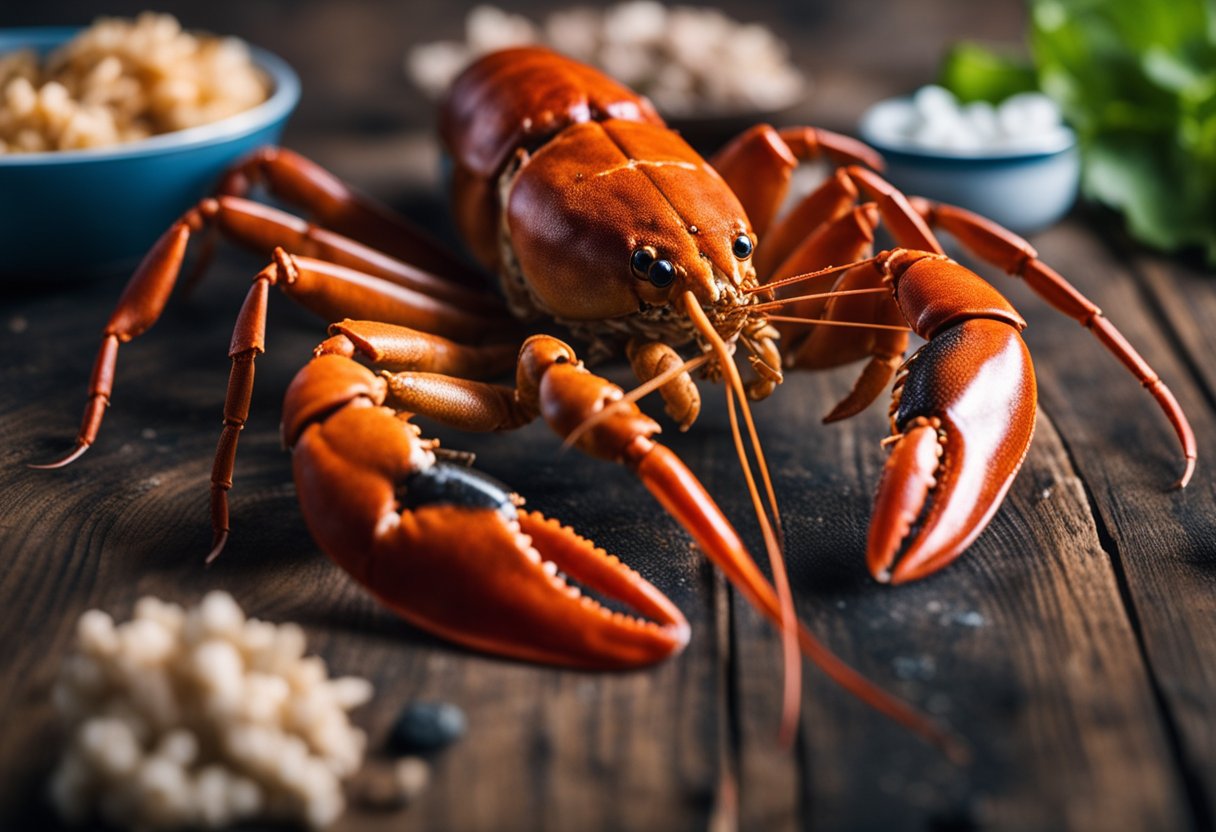
When it comes to physical characteristics, there are several differences between lobsters and crabs. In this section, I will discuss the size and shape, color and appearance, and exoskeleton and claws of both lobsters and crabs.
Size and Shape
Lobsters and crabs have distinct differences in their size and shape. Lobsters have an elongated body with eight walking legs and two sets of pincers.
The leg span of a lobster can range from a few inches to over three feet long, depending on the species. On the other hand, crabs are typically wider in stature and have eight legs also, but have one pair of claws.
Color and Appearance
Both lobsters and crabs come in a variety of colors and appearances. Lobsters can range in color from bright red to dark brown, with some species even having a blue hue, such as the Audresselles lobster.
Crabs can also come in a variety of colors, including red, brown, and blue. However, their appearance can vary depending on the species and habitat they live in.
Exoskeleton and Claws
One of the most noticeable differences between lobsters and crabs is their exoskeleton and claws. Lobsters have a harder, more rigid exoskeleton, while crabs have a softer, more flexible shell.
Additionally, lobsters have two large front claws, one for crushing and one for cutting, while crabs have one pair of pincers. The claws of both lobsters and crabs are used for defense, as well as for catching and consuming prey.
In summary, lobsters and crabs have distinct physical characteristics that set them apart from each other. Lobsters have an elongated body with eight walking legs, two sets of pincers, and a hard exoskeleton, while crabs are typically wider in stature with eight legs and one pair of pincers, and a softer exoskeleton.
Both lobsters and crabs come in a variety of colors and appearances, but their claws are used for defense and catching prey.
Habitat and Lifestyle
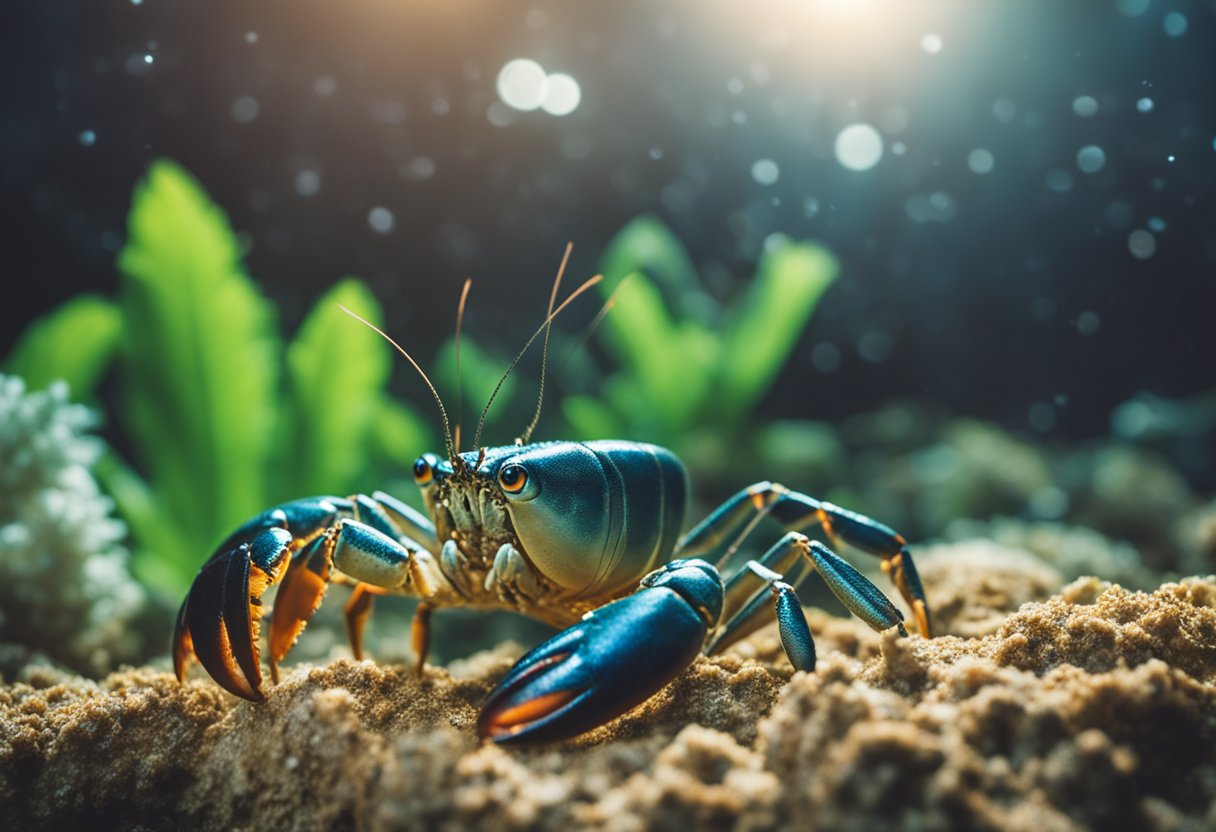
Habitat and Distribution
Lobsters and crabs are both aquatic animals that live in different habitats. Lobsters are primarily found in the wild in the Atlantic Ocean, while crabs can be found in both saltwater and freshwater environments around the world.
Lobsters prefer to live on the ocean floor, often in rocky areas, while crabs are more versatile and can be found in a variety of habitats, including rocky shores, sandy beaches, and even freshwater streams and rivers. Some species of crabs even live on land, such as the coconut crab found in tropical regions.
Diet and Feeding
Both lobsters and crabs are omnivores, meaning they eat both plants and animals. Lobsters primarily feed on mollusks, such as clams and mussels, as well as algae, worms, bacteria, and fungi.
Crabs have a more varied diet and will eat almost anything, including other crabs, fish, and even dead animals. They also consume mollusks, algae, and other small marine organisms.
Lobsters and crabs both have a hard exoskeleton that they must periodically molt in order to grow. During the molting process, they are vulnerable to predators and will often hide until their new exoskeleton hardens.
In conclusion, while lobsters and crabs share some similarities in their diet and feeding habits, they have different habitats and lifestyles.
Lobsters are primarily found in the wild in the Atlantic Ocean and prefer to live on the ocean floor, while crabs can be found in a variety of habitats around the world, including both saltwater and freshwater environments.
Types and Species
Common Types of Lobsters
Lobsters are a type of crustacean that belong to the family Nephropidae. There are many different types of lobsters, but some of the most common ones include:
- American lobster: also known as Maine lobster, this is one of the most popular types of lobster in the United States. It has large claws and a spiny body.
- Spiny lobster: this type of lobster is found in warm waters and does not have claws. It has long antennae and a spiny body.
- Reef lobster: this type of lobster is found in coral reefs and has a small body. It is often brightly colored.
Common Types of Crabs
Crabs are a type of crustacean that belong to the family Brachyura. There are many different types of crabs, but some of the most common ones include:
- Spider crab: this type of crab has long, thin legs and a small body. It is often found in shallow waters.
- King crab: this type of crab has large, meaty claws and is often found in cold waters.
- Snow crab: this type of crab has long, spindly legs and is often found in cold waters.
- Dungeness crab: this type of crab has a large, meaty body and is often found on the west coast of North America.
- Japanese spider crab: this type of crab is the largest crab in the world and can have a leg span of up to 13 feet.
- Blue crab: this type of crab is found in the Atlantic Ocean and has a blue-green shell.
- Rock crab: this type of crab is found in rocky areas and has a hard, spiny shell.
- Pea crab: this type of crab is very small and is often found living inside oysters and other shellfish.
Overall, lobsters and crabs are both delicious seafood options that have many different types and species. It’s important to know the differences between them when cooking or ordering at a restaurant.
Culinary Uses
As one of the most popular seafood options, both lobster and crab are highly sought after for their unique flavors and textures. In this section, I will discuss the culinary uses of these two crustaceans, including their taste and texture, popular dishes, and nutritional value.
Taste and Texture
Lobster and crab have distinct taste profiles and textures. Crab meat is generally sweeter than lobster meat, while lobster meat is less flaky and holds together better.
The taste of crab meat can vary depending on the type of crab, with some being more delicate and others having a stronger flavor. Lobster meat has a more subtle flavor that is often described as sweet and succulent.
In terms of texture, crab meat is typically softer and more delicate than lobster meat. Lobster meat has a firmer texture and is often described as meaty or chewy. Both lobster and crab are versatile and can be used in a variety of dishes, from soups and stews to salads and sandwiches.
Popular Dishes
Both lobster and crab are used in a variety of popular dishes. Crab cakes are a classic dish made with crab meat, bread crumbs, and seasonings.
These cakes can be baked, fried, or broiled and are often served with a sauce or aioli. Lobster rolls are another popular dish that features lobster meat served on a buttered and toasted bun with mayonnaise, celery, and other seasonings.
Bisque is a creamy soup that is often made with either lobster or crab meat. This soup can be served hot or cold and is typically seasoned with herbs, spices, and cream.
Soft shell crab is another popular dish that features the whole crab, including the shell, which is fried or sautéed and served with a sauce or seasoning.
Nutritional Value
Both lobster and crab are excellent sources of protein and are low in calories. They also contain a variety of important vitamins and minerals, including iron, selenium, phosphorus, zinc, and copper.
Lobster tails are a particularly good source of protein, with each tail containing around 30 grams of protein. King crab legs are also a good source of protein and are often sought after for their sweet taste and meaty texture.
Overall, both lobster and crab are delicious and nutritious seafood options that can be used in a variety of dishes. Whether you prefer the sweet taste of crab or the meaty texture of lobster, these crustaceans are sure to satisfy your seafood cravings.
Commercial Aspects
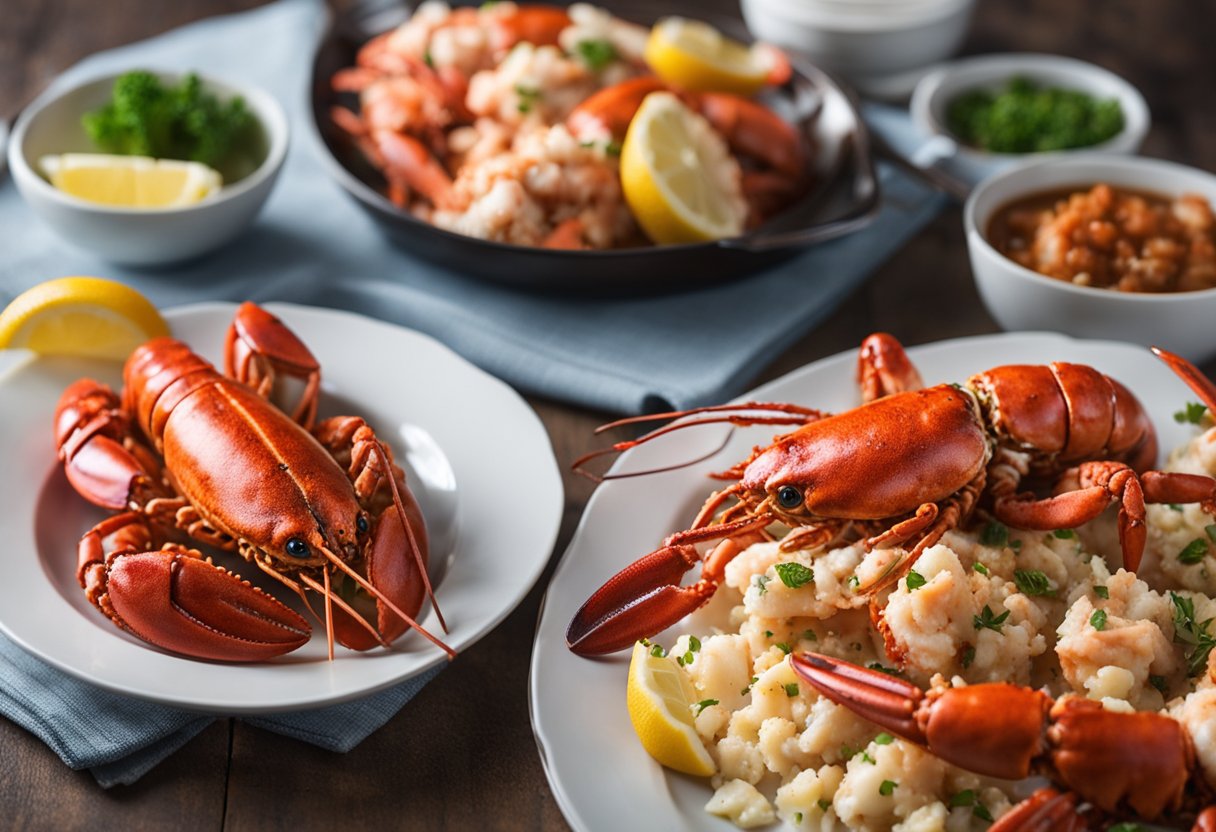
Price and Affordability
When it comes to price, both lobster and crab are considered luxury seafood items. However, there are differences in their affordability. Generally, crabs are more affordable than lobsters. The price of crabs varies depending on the type and size of the crab.
For example, king crabs are more expensive than snow crabs. On the other hand, the price of lobsters is determined by their weight and the season.
During the peak season, lobsters are more affordable, while during the off-season, they can be quite expensive. In addition, wild-caught lobsters are more expensive than farmed lobsters.
Fishing and Harvesting
Fishing and harvesting of both crabs and lobsters are done commercially. Crab fishing is usually done using traps, pots, and nets. The crabs are caught alive and then transported to the market. In contrast, lobster fishing is done using traps or pots.
The traps are baited and then dropped into the water. After a certain period, the traps are pulled up, and the lobsters are collected.
Both crab and lobster fishing are regulated by the government to prevent overfishing and to ensure sustainability. In the United States, the Atlantic States Marine Fisheries Commission regulates lobster fishing, while the National Marine Fisheries Service regulates crab fishing.
In conclusion, both crabs and lobsters are considered luxury seafood items. Crabs are generally more affordable than lobsters. Crab fishing is done using traps, pots, and nets, while lobster fishing is done using traps or pots. Both types of fishing are regulated to ensure sustainability.
Frequently Asked Questions
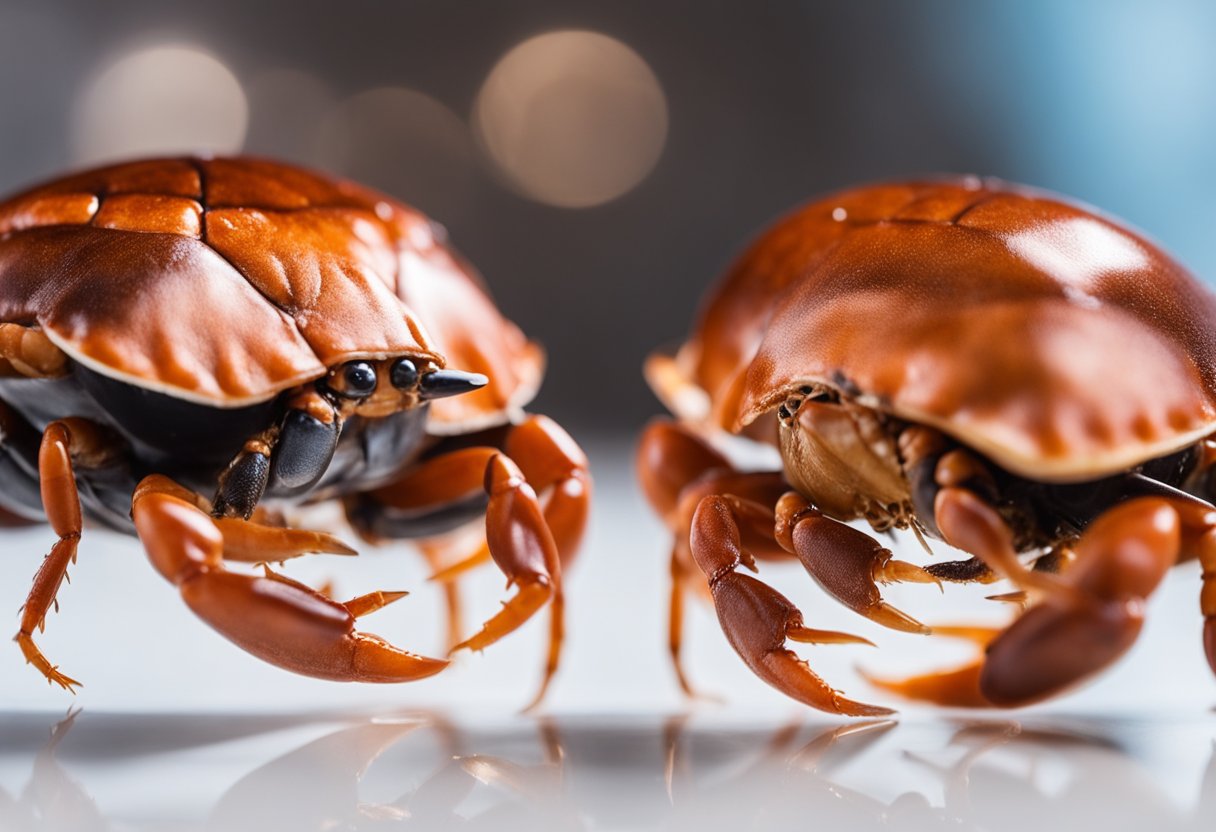
What are the main differences between lobsters and crabs?
Lobsters and crabs are both crustaceans and belong to the order Decapoda. However, there are some key differences between the two. Lobsters generally have longer bodies and tails, while crabs have a more circular shape.
Lobsters also have larger claws, which are used for catching prey, while crabs have smaller claws that are used for feeding. Additionally, lobsters tend to live in deeper waters, while crabs are commonly found in shallow waters.
How do the prices of crabs and lobsters compare?
The prices of crabs and lobsters can vary depending on the species, location, and time of year. Generally, lobsters are more expensive than crabs due to their larger size and higher demand. However, some species of crabs, such as king crabs, can be more expensive than certain types of lobsters.
What is the nutritional value of crabs compared to lobsters?
Both crabs and lobsters are low in fat and calories and high in protein. However, lobsters are generally higher in cholesterol than crabs. Crabs, on the other hand, are a good source of omega-3 fatty acids and contain a variety of vitamins and minerals, such as vitamin B12, zinc, and copper.
Are crabs and lobsters related in any way?
Yes, crabs and lobsters are both crustaceans and belong to the same order, Decapoda. They also share similar body structures, such as their hard exoskeletons and jointed appendages.
Do lobsters and crabs taste different?
Yes, lobsters and crabs have distinct flavors. Lobster meat is often described as sweet and succulent, while crab meat is more delicate and slightly sweet. The taste can also vary depending on the species and preparation method.
Which crustacean yields more meat: crab or lobster?
Lobsters generally yield more meat than crabs due to their larger size. However, some species of crabs, such as king crabs, can yield a significant amount of meat as well. The amount of meat can also vary depending on the preparation method and the part of the crustacean that is being consumed.




